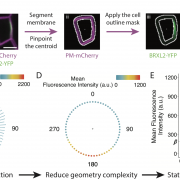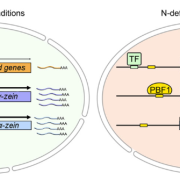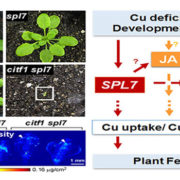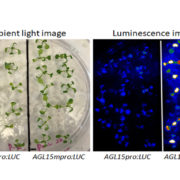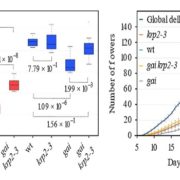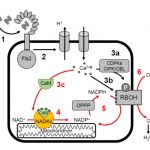Ray parenchymal cells contribute to lignification of tracheids in developing xylem of Norway spruce (Plant Phys)
 Lignin makes up to 27% of the dry weight of wood and is important structurally as well as serving as an effective carbon sink. Lignin is produced from monolignol precursors that are released into the apoplast and then polymerized. Previous studies have suggested that the monolignols are produced not only from the developing conducting cells (tracheids and tracheary elements) but also from adjoining cells, in what has been dubbed the “good neighbour” hypothesis. Blokhina, Laitinen, and Hatakeyamac et al. used single-cell metabolomics and transcriptomics to investigate whether ray parenchymal cells (which don’t lignify) contribute to the monolignol pool. They found that most of the monolignol biosynthesis pathway genes, as well as genes encoding transcription factors that regulate this pathway and those encoding peroxidases and laccases necessary for lignin polymerization, were expressed equally highly in ray cells as tracheids. Thus, their results support the role of ray cells as “good neighbours”. The authors also identified a set of genes expressed expressed solely in ray cells. (Summary by Mary Williams) Plant Physiol. 10.1104/pp.19.00743
Lignin makes up to 27% of the dry weight of wood and is important structurally as well as serving as an effective carbon sink. Lignin is produced from monolignol precursors that are released into the apoplast and then polymerized. Previous studies have suggested that the monolignols are produced not only from the developing conducting cells (tracheids and tracheary elements) but also from adjoining cells, in what has been dubbed the “good neighbour” hypothesis. Blokhina, Laitinen, and Hatakeyamac et al. used single-cell metabolomics and transcriptomics to investigate whether ray parenchymal cells (which don’t lignify) contribute to the monolignol pool. They found that most of the monolignol biosynthesis pathway genes, as well as genes encoding transcription factors that regulate this pathway and those encoding peroxidases and laccases necessary for lignin polymerization, were expressed equally highly in ray cells as tracheids. Thus, their results support the role of ray cells as “good neighbours”. The authors also identified a set of genes expressed expressed solely in ray cells. (Summary by Mary Williams) Plant Physiol. 10.1104/pp.19.00743


